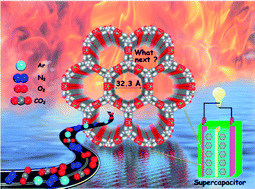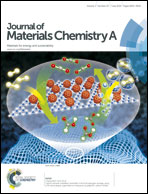A channel-type mesoporous In(iii)–carboxylate coordination framework with high physicochemical stability for use as an electrode material in supercapacitors†
Abstract
Stability is a critical issue in practical applications of metal–organic frameworks (MOFs). These materials are usually destroyed by heating or exposure to chemicals, which cause them to reduce or even lose their porous nature. We report here a mesoporous 437-MOF material with perfect 1-D hexagonal channels of ca. 3 nm pore size, which shows both high thermal and chemical stability. The gas sorption capacity of desolvated 437-MOF can be improved by activating the material at higher temperatures. Remarkably, optimum porosity is achieved using a combined approach of heating the sample in boiling water followed by further heating. This unexpected observation can be ascribed to the synergistic effects of the external and internal surfaces of the porous crystalline material. An exploration of the possible applications of this material in supercapacitors shows a great potential for activated 437-MOF to be used as an electrode material as a result of its high surface area (ca. 2400 m2 g−1), hierarchical pore structure, and the pseudocapacitor contribution provided by doping with In.


 Please wait while we load your content...
Please wait while we load your content...